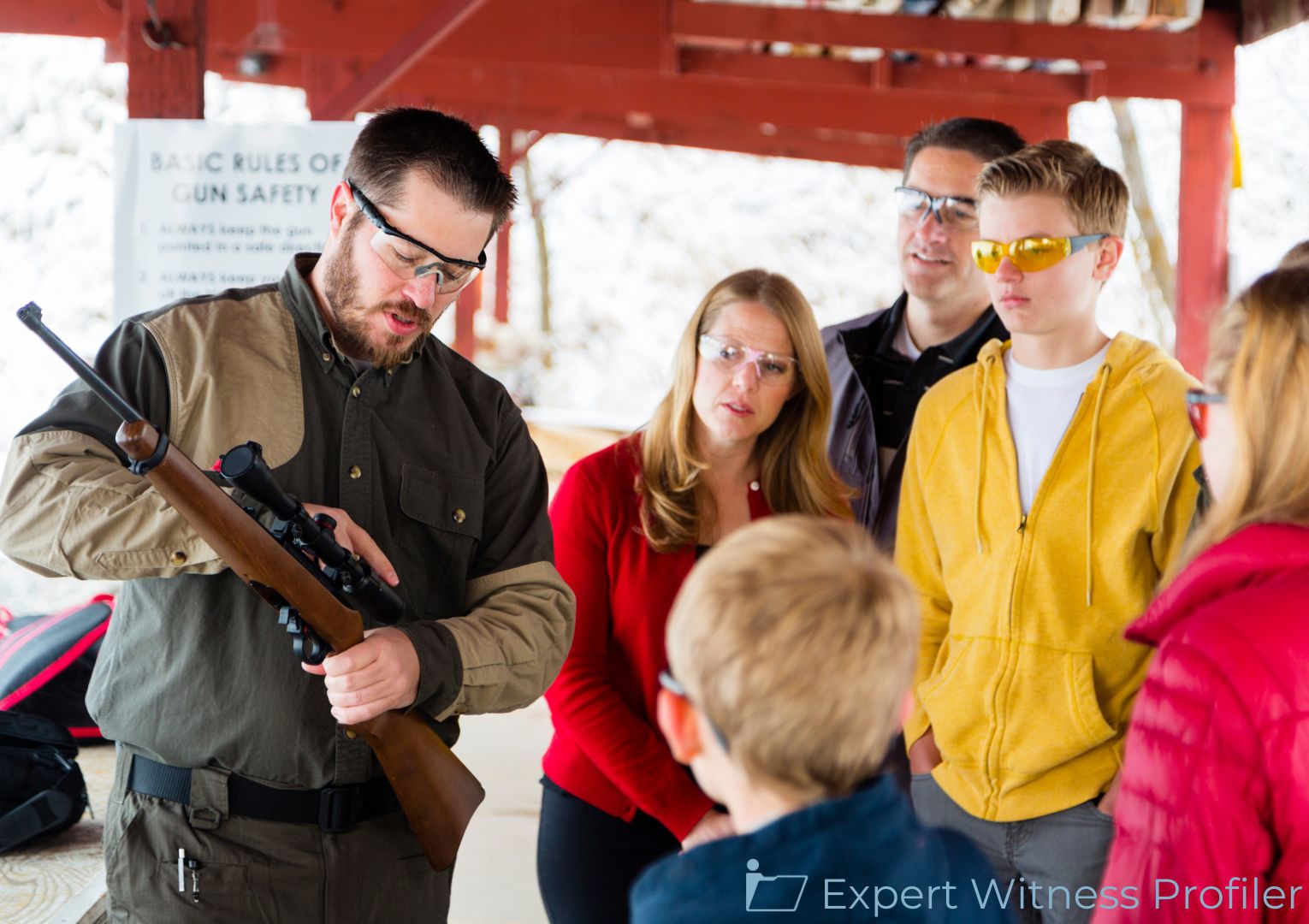Design Engineering Expert Witness’ Product Defect Theory held to be Reliable
Posted on April 30, 2024 by Expert Witness Profiler
A district judge in New Jersey decided that a design engineering expert witness could testify about the alleged design defects of the model in question and the risks and possible outcomes of such design defects.
On August 19, 2016, William Visakay (“Visakay”) was riding his 2007 Craftsman Lawn Tractor in his backyard when it overturned and rolled, causing fuel to spill out and the lawnmower to catch on fire. After the accident, Visakay died from burn injuries. Plaintiff and her expert, Christopher Ryan, argued that there was a design defect in the lawnmower, which caused the fuel tank to become damaged when the lawnmower rolled over. Defendant and their experts claimed that Visakay had failed to properly secure the lawnmower’s gas cap, which caused the fuel to pour out of it and become ignited by a spark from an undetermined source.
The only remaining Defendant, Husqvarna Consumer Outdoor Products N.A., Inc. challenged each of the three criteria required for Ryan’s testimony to be admissible. First, HCOP contended that Ryan was not qualified to opine on the cause and origin of the fire. Second, HCOP argued that Ryan’s methodology was not sufficiently reliable to be admissible. Third, HCOP claimed that Ryan’s opinions did not fit the facts of the case.

Design Engineering Expert Witness
Christopher Ryan received his Bachelor of Science Degree in Mechanical
Engineering, with an emphasis on product design, from Iowa State University. He has over 25 years of experience working with manufacturing companies, including managing prototype testing and ensuring products, including lawnmowers, meet industry safety standards. He also worked at John Deere for 19 years, where he oversaw the testing of new mowers and small tractors.
Discussion by the Court
Qualifications
HCOP asserted that Ryan was not qualified to opine on the cause and origin of the fire because of his lack of experience with fire investigation. The Court held that HCOP’s argument, asserting that Ryan was not qualified, was unavailing. Ryan possessed the “specialized expertise” necessary to opine on the issues in this case with 20 years of experience designing products and rejecting/approving designs, including specifically with lawnmowers.
He was employed for 19 years with John Deere, where he managed the labs responsible for testing all new John Deere mowers and small tractors. Notably, Ryan worked with other manufacturers to help develop an industry testing standard to validate new plastic fuel tank designs.
Defendant’s other challenges rebuffing Ryan’s qualifications, such as its argument that other witnesses with experience in fire investigation were unable to form a reliable conclusion about the cause of the fire, were unpersuasive. The Court was satisfied that with Ryan’s extensive background and experience with lawnmowers, Ryan was qualified to provide expert testimony in this case as to the alleged defect of the lawnmower and, relatedly, the cause of the fire.
Henceforth, Ryan is qualified to opine about the alleged design defects of the lawnmower and the risks and possible outcomes of such design defects, including the flammability and explosive nature of the products.
Reliability
HCOP contended that Ryan’s methodology was not sufficiently reliable. Specifically, HCOP argued that (i) Ryan lacked sufficient facts and data to form his opinions; (ii) Ryan evaluated his product defect theory using scientifically unreliable testing; and (iii) Ryan’s theory that the fire was caused by a product defect relied on no methodology.
Ryan relied on sufficient facts and data to form his opinions
First, as described in his expert report, Ryan relied on sufficient facts and data to form his opinions: he reviewed photos from the scene, police reports, medical reports, sources with information about the mower at issue (such as the Craftsman Model Operator’s Manual) and other documents from the case. He also inspected the burned mower and summarized his findings, performed tests with exemplar mowers, and conducted a three-dimensional virtual analysis.
Ryan’s employed methodology is sufficiently reliable so that it will aid the jury in reaching accurate results
Second, Ryan’s employed methodology is “sufficiently reliable so that it will aid the jury in reaching accurate results.” After inspecting the burned mower, Ryan hypothesized that the fuel tank “would have been crushed” and that “pressurized fuel would pour out uncontrollably” due to the observed damage to the crossmember. Then, to prove his theory, he purchased and examined exemplar mowers and performed tests including a static side roll over test, a mild dynamic side roll over test, and a rearward/right side roll over test. These tests are summarized in Ryan’s expert report, and yielded results that were allegedly consistent with his inspection of the burned mower. Ryan also conducted an “engineering analysis,” which included investigation of a three-dimensional model.
HCOP also contended that Ryan’s testing did not yield the damage that he expected. Ryan’s conclusion from his engineering analysis, however, stated the opposite: “The crossmember can crush the fuel tank during impact with the ground.” This was consistent with the hypothesis he formed after his examination of the burned mower. HCOP’s arguments concerned the validity of Ryan’s conclusions—which is a determination for the jury to make after the benefit of cross-examination.
Ryan’s fire causation opinions result primarily from the same methodology detailed above
Ryan’s sufficiently reliable methodology of determining the defect in turn led to his conclusions about the fire. Notably, the Operator’s Manual explicitly stated: “Gasoline is extremely flammable and the vapors are explosive,” which reinforced Ryan’s conclusions that fuel contacting the hot engine could result in a fire. The Court found Defendant’s argument, that Ryan did not follow the National Fire Protection Association (“NFPA”) fire investigation standard, unpersuasive; NFPA standards are “merely a guide to assist fire investigators, and their provisions are nonmandatory.”
Fit
HCOP challenged the fit between Ryan’s proffered testimony and the facts of the case. Specifically, it asserted that Ryan’s opinions were not applicable to the facts of the case and did not analyze “what damage a fuel tank could experience in an overturn.”
Plaintiff has demonstrated multiple ways in which Ryan’s opinions will assist the jury. Ryan’s opinions speak to the purported design defects of the Craftsman model, which Plaintiff directly relies on for her claims. Ryan opines on the risks related to certain design choices of the lawnmower, and whether there were reasonable alternative designs that could have reduced those risks. Therefore, Ryan’s “specialized knowledge will help the trier of fact to understand the evidence or to determine a fact in issue,” thus allowing for that testimony’s admissibility.
HCOP filed a motion for summary judgment concurrently with its motion to exclude Ryan’s testimony. The Court noted that genuine issues of material fact existed that precluded summary judgment considering Ryan and Defendant’s experts will present competing theories of the accident in this case.
Held
The Court denied HCOP’s motion to exclude Christopher Ryan and HCOP’s motion for summary judgment.
Key Takeaways:
- The Third Circuit reads the qualification requirement broadly and interprets it liberally—a “broad range of knowledge, skills, and training qualify” as specialized expertise. Ryan has over 20 years of experience designing products and rejecting/approving designs, including specifically with lawnmowers.
- Ryan’s employed methodology was “sufficiently reliable so that it will aid the jury in reaching accurate results.” His tests yielded results that were allegedly consistent with his inspection of the burned mower. Ryan also conducted an “engineering analysis,” which included investigation of a three-dimensional model.
- With respect to fit, the expert’s testimony must be relevant for the purposes of the case and must assist the trier of fact by establishing a valid scientific connection to the pertinent inquiry. Plaintiff has demonstrated multiple ways in which Ryan’s opinions will assist the jury.
Case Details:
| Case Caption: | Visakay V. Sears Roebuck And Co. Et Al |
| Docket Number: | 2:17cv11570 |
| Court: | United States District Court, New Jersey |
| Order Date: | April 29, 2024 |






